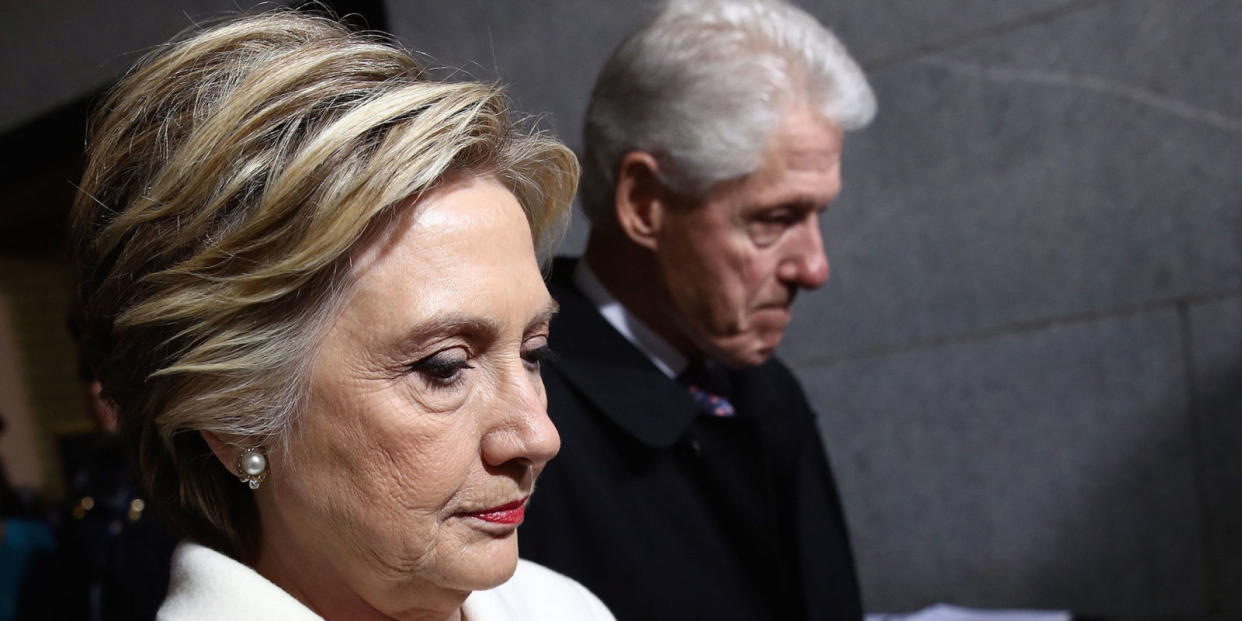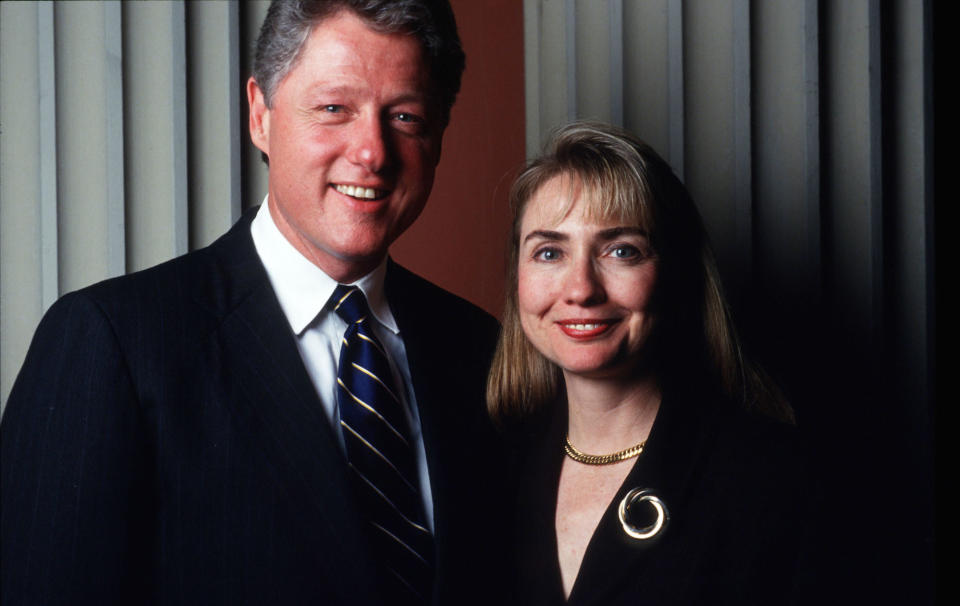Will The New York Times Ever Fix Its Clinton Problem?

But injustice breeds injustice; the fighting with shadows and being defeated by them necessitates the setting up of substances to combat.
-Charles Dickens, Bleak House
The first prolonged literary autopsy of the 2016 presidential campaign of Hillary Rodham Clinton has been unleashed upon what is widely misperceived as a country hungry for one of those. Anyway, Shattered, written by veteran reporters Jonathan Allen and Amie Parnes, is out there now. The way you know it's out there is that Michiko Kakutani has reviewed it for The New York Times and, in doing so, Kakutani has taken an opportunity to exercise the skills for political analysis she shares with Maureen Dowd, because both of them have been there through the entire extent of the embarrassing relationship between The New York Times and the Clinton family.
(Full disclosure: I have not yet read the book. Allen and Parnes are both good, reliable reporters, and I have no doubt that all of the anonymous backstabbing, ass-covering, and score-settling in the book is accurately quoted and a further clear example that the members of the consultant class have the fundamental loyalty of a brood of vipers.)
This, for example, is a summation of the campaign from Kakutani's review.
There was a perfect storm of other factors, of course, that contributed to Clinton's loss, including Russian meddling in the election to help elect Trump; the controversial decision by the F.B.I. director, James Comey, to send a letter to Congress about Clinton's emails less than two weeks before Election Day; and the global wave of populist discontent with the status quo (signaled earlier in the year by the British "Brexit" vote) that helped fuel the rise of both Trump and Bernie Sanders. In a recent interview, Clinton added that she believed "misogyny played a role" in her loss.
Well, that's quite the wave of the hand right there.
Veteran observers may note one factor missing from that bill of particulars. The fact is that the Times and the Clintons have been locked in this solipsistic dance of destruction ever since Jeff Gerth wrote the first botched story about Whitewater during the 1992 presidential campaign. It has defined the newspaper and the family, one to another. Somehow, Being Tough on the Clintons has become one of the ways the Times has tried to prove its journalistic bona fides to the country and the world, while the Clintons seem to veer between hating the paper and wondering why the it doesn't love them.

The dysfunction has gone on so long that hardly anyone remembers how it began-which was the aforementioned Whitewater story and everything that came after it, including some truly odious work by the late William Safire, who beat his little tin drum not only on Whitewater, but on TravelGate, FileGate, and whatever other fantasies he was fed by the Republicans in Congress and by the sieve that was Ken Starr's office.
In one 1996 column, Safire memorably called HRC "a congenital liar," and in January of 1997, he assured his readers that indictments were imminent on the FileGate story. They were not, but Indictments Are Imminent became a genre of the Times' Clinton coverage unto the most recent campaign, as we shall see. Due to the exalted position the Times holds in American journalism, the extended exercise in bad journalism that was conducted between 1992 and 2000 has had a remarkable shelf-life, as demonstrated by this column from the Washington Post's Kathleen Parker from January of 20-bloody-16.
Questions about Hillary Clinton's honesty did not start with Benghazi or with emails and a private server, but began ages ago with any number of fabricated - or at least exaggerated - stories. Many may remember what New York Times columnist William Safire wrote about Clinton in 1996: "Americans of all political persuasions are coming to the sad realization that our First Lady - a woman of undoubted talents who was a role model for many in her generation - is a congenital liar," he said. "Drip by drip, like Whitewater torture, the case is being made that she is compelled to mislead, and to ensnare her subordinates and friends in a web of deceit." There "they" go again? Safire's concerns at the time - Whitewater, Travelgate, "lost" records - may seem remote and trivial to some, but the drip-drip he identified didn't stop with the White House years.
(This is proof that it wasn't just the Times that went crazy over the Clintons. The late Christopher Hitchens fell for every poolroom liar in Arkansas, and, as demonstrated by his most recent effort, Andrew Sullivan is still completely bananas on the subject.)
These events were not only "remote and trivial." They were, by and large, complete bullshit, inflated by Republicans and a willing and timid elite political press into a Questions Remain culture of faux-scandal that persisted through the entirety of the 2016 campaign. And it began long before the Times ran seven stories about James Comey's release of his 11th hour letter to Congress on its front page.
In July, the Times ran a shoddy story in which the newspaper reported that a criminal investigation into HRC's famous use of a private email server had been launched by the Department of Justice. The story fell apart almost immediately, and then-public editor Margaret Sullivan burned the bones of it in a subsequent column. This was bad reporting, but the story's authors didn't make this up. It was what they were told by their sources, identified as "senior government officials." Remember when Jayson Blair blew up, and the Times promised to end the promiscuous use of anonymous quotes? Yeah, that was cool.
These events were not only "remote and trivial." They were, by and large, complete bullshit.
The Comey story broke on a day in late October while I was driving through New Hampshire between a Trump event in Manchester and another one way out in the boonies, and I can tell you that the story blotted out the sun. By the time he got to the small mill town, everybody in the gym at the little Christian school knew so much about the Comey letter that Trump only had to make a head-fake toward it to get the crowd to bringing the roof down.
That moment turned the campaign for good. There's no point in denying it. For more than 25 years now, it was the Times that wrote the Clinton Rules and brought them down the mountain as surely as Charlton Heston brought the tablets of the law down Mount Horeb. This is a great newspaper with people who do great work, but one that somehow leaves its greatness between the cushions of the sofa when it comes to dealing with one family in our politics. It's truly weird.
Respond to this post on the Esquire Politics Facebook page.
You Might Also Like

